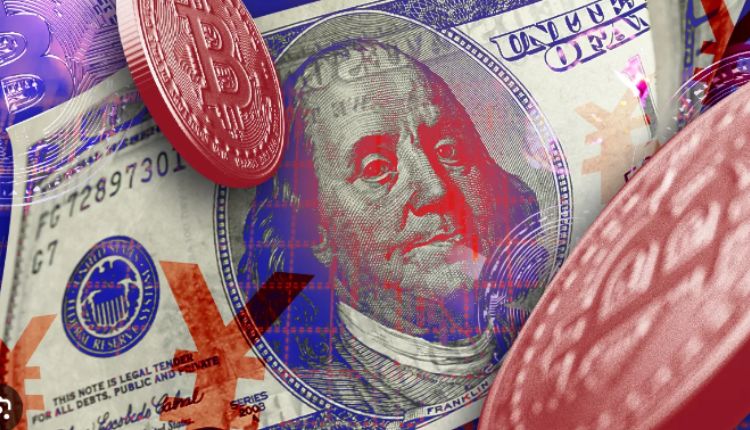Introduction:
The US Dollar Index, also known as the DXY, is a widely followed financial benchmark that measures the value of the United States dollar relative to a basket of other major world currencies. Created in 1973 by the Intercontinental Exchange (ICE), the US Dollar Index plays a crucial role in the global financial landscape. As the world’s primary reserve currency, the USD’s performance affects economies, trade, and financial markets worldwide.
In this article, we will delve into the intricacies of the US Dollar Index, its significance, and how it influences various economic and financial aspects globally. From its calculation methodology to its implications for businesses, investors, and governments, this comprehensive guide will provide valuable insights into the complexities and importance of the US Dollar Index.
I. The Calculation Of The US Dollar Index:
The usd index is computed by taking a weighted geometric mean of six major currencies: the Euro (EUR), Japanese Yen (JPY), British Pound Sterling (GBP), Canadian Dollar (CAD), Swedish Krona (SEK), and Swiss Franc (CHF). These currencies represent some of the most significant trading partners of the United States and account for a substantial portion of global trade.
The calculation is based on exchange rates relative to the US dollar and is updated in real-time throughout the trading day. Each currency’s weight in the index is determined by its share in US trade, ensuring the index accurately reflects the dollar’s international value.
II. Significance Of The US Dollar Index:
- Global Trade and Commerce: The US Dollar Index plays a pivotal role in international trade. As the world’s primary reserve currency, the USD is widely used for cross-border transactions, denominating commodities like oil, gold, and other raw materials. A strong dollar benefits importers but can make exports more expensive, affecting trade balances and economic growth in various countries.
- Foreign Exchange Markets: Forex traders and investors closely monitor the US Dollar Index as a key indicator of market sentiment and risk appetite. When the dollar strengthens, investors might seek safer assets, while a weaker dollar may lead to increased risk-taking and capital flows to emerging markets.
- Inflation and Monetary Policy: Central banks, including the US Federal Reserve, consider the US Dollar Index when formulating monetary policies. A strong dollar can help control inflation by reducing the cost of imported goods, while a weak dollar may boost exports and stimulate economic growth.
III. Impact On Financial Markets:
- Equities: The US Dollar Index and equity markets often exhibit an inverse relationship. A stronger dollar can lead to lower commodity prices, impacting commodity-driven industries. On the other hand, a weaker dollar can benefit multinational companies with significant overseas revenue.
- Commodities and Precious Metals: The US Dollar Index significantly influences commodity prices. As commodities are priced in dollars, a stronger dollar can make them more expensive for holders of other currencies, potentially reducing demand and prices. Conversely, a weaker dollar can boost commodity prices, including gold and silver, as they become more appealing to investors seeking a hedge against inflation.
- Bonds and Interest Rates: The US Dollar Index affects interest rates and bond markets. A rising dollar may lead to lower yields on US government bonds as foreign investors find them more attractive. Conversely, a weakening dollar can push bond yields higher, impacting borrowing costs for governments and corporations.
IV. Conclusion:
The US Dollar Index serves as a critical barometer of the dollar’s strength and international standing. Its influence permeates through various aspects of the global economy, from trade and commerce to financial markets and monetary policy. As geopolitical and economic dynamics evolve, understanding the US Dollar Index’s impact becomes even more crucial for businesses, investors, and policymakers.
FAQs:
Q1. How often is the US Dollar Index updated? A1. The US Dollar Index is updated in real-time throughout the trading day. Its value changes as exchange rates fluctuate relative to the basket of six major currencies.
Q2. Is the US Dollar Index a reliable predictor of future currency movements? A2. While the US Dollar Index provides insights into the dollar’s strength, it is essential to consider other economic indicators and factors influencing currency markets. As with any financial benchmark, predicting future currency movements remains challenging and subject to numerous variables.
Remember, the value of the US Dollar Index is not a trading recommendation, but rather a tool to analyze trends and assess the dollar’s performance against a basket of major currencies. Always conduct thorough research and seek advice from financial professionals before making investment decisions.

